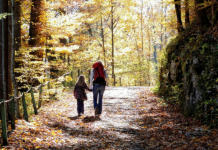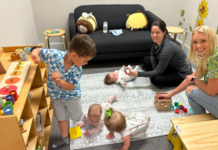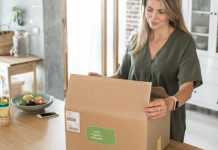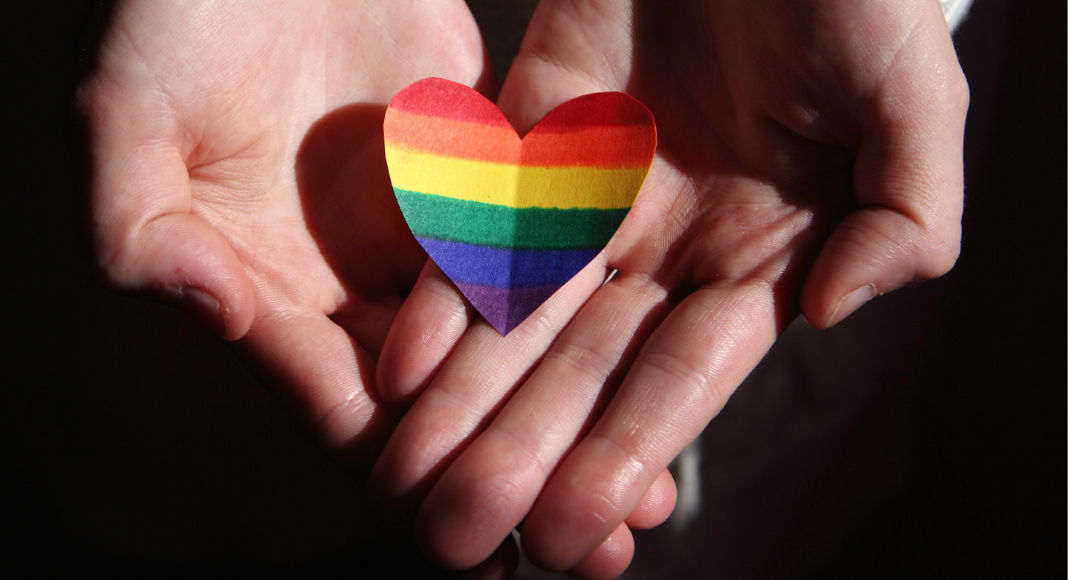
If you told me ten years ago that at age 36 I would be a proud and open member of the LGBTQ+ community, I would not have believed you. Not that I ever had anything against those on the rainbow spectrum – I just didn’t know much about it.
Growing up I didn’t have anyone in my circle of family and friends who identified (openly at least) as LGBTQ+. There were probably kids at my school or acquaintances who were gay or bi or some other letter in the alphabet soup, but it didn’t impact my day-to-day life. I was taught to accept others regardless of their similarities or differences to my own experience and that worked well in helping me navigate the world and the variety of people in it.
Fast forward to my early 30s. I was living in Columbia, married to my college boyfriend (go Gamecocks!), post-grad school, and working at Richland Library. Then I started doing what I do best – research. You see, I was trying to better understand some of the things my partner had discussed with me in terms of feeling uncomfortable in his gender identity. I didn’t have much previous experience in this topic, so I started reading everything the library had to offer (which thankfully was a great selection!) on being transgender: memoirs, biographies, fiction, non-fiction, children, teen, and adult works.
Not only did I learn a lot, but I also realized something – I was seeing myself and my own feelings reflected on those pages. At first, I was in denial. How could I be transgender? I had a very happy childhood, wonderfully supportive parents, a husband, and was already a grown adult. If I was transgender, wouldn’t it have come to the forefront earlier in life? However, as I continued with my journey of self-discovery I came to learn that there are as many back-stories and ways to be transgender as there are people in the community.
I started slowly – talking with my therapist, my partner, doing some self-reflection. I cut my hair, started wearing more traditionally “male” clothing, and asked some close friends to use male pronouns and the name “Erik”. While each step I took was nerve-wracking, it also came with a great sense of relief. The anxieties and discomfort of never really feeling like I fit in properly began to fade. I was starting to feel so much more comfortable in my own skin. After a few years, I came out to my family, friends, and co-workers and began hormones to better match my body to how I felt.
I was very fortunate. The overall reaction from people in my life was supportive and positive. I began this process as an adult – I already had an education, a good job, a home, a spouse, health insurance, and funds to help with these changes. My partner already identified as part of the LGBTQ+ community, so he understood where I was coming from and was encouraging. While some of my friends and family didn’t quite understand, they were supportive and loving. The administration at my job allowed me to change my name and pronouns in the workplace and my co-workers were caring and helpful.
Unfortunately, this level of acceptance and love is not common. In the support groups I’m a part of, both in-person and online, I hear countless stories of disownment, anger, shaming, homelessness, loss of jobs, and violence. Pride is a time for us to celebrate how far we’ve come in being able to be who we are and love who we want. However, it is also a time of reflection on how much further we need to go in order to end the fear and hatred of people in the LGBTQ+ community.
I feel education, representation, and personal connections can go a long way to encourage acceptance, especially for those who have never had interactions with people in the rainbow community. That’s why I try to be as open as possible about my identity – a queer, pansexual, trans-man – and happily answer any questions I can from those with a genuine desire to learn and understand.
Here are a few bits of information I’ve picked up over the years that might be helpful for people who want to support their friends, family, or co-workers who are LGBTQ+.
-
- Listen to them! Coming out for the first time or telling someone new can be a scary process. Acting shocked or bombarding them with questions can make the situation even more stressful. Let them share as much or as little as they want and be supportive.
- Coming out” is a very personal process and can look different from person to person. Some come out all at once to everyone and others may only tell a few people. It’s always up to the individual. Some people may even come out multiple times during the course of their life. If someone changes their mind about their identity, that doesn’t mean they were lying or confused before – it just means they’re continuing to explore and learn about themselves and what makes them comfortable.
- Respect names and pronouns! People may try on different names or pronouns to see what feels best. It may be confusing, but try your hardest to use whatever name or pronouns that person asks you to. Mistakes can happen and if they do, correct yourself and move on without making a big deal about it. Being overly apologetic just draws attention to the issue and can make people uncomfortable.
- Not everyone who is LGBTQ+ is comfortable answering questions or sharing information about themselves or their identity and it is not their responsibility to do so! There are many resources out there for all age levels (some listed below) that can help answer questions you may have. Please do your own research and don’t put someone on the spot if they haven’t told you they are okay with questions.
Ten years ago I never thought I’d become a member of the LGBTQ+ community, but I sure am proud to be here.
LGBTQ+ Resources to Learn More!
- Glossary of LGBT Terms by National LGBT Health Education Center
- Resources from the Human Rights Campaign
- Richland Library LGBTQ+ Reading Lists:
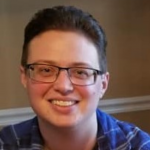 Erik Shofner Heimbrook lived 10+ years in Columbia while attending the University of South Carolina for a B.A. and M.A. in archaeology and later working for the Richland Library system. He now resides in Spartanburg with his husband and two attention-hungry cats. He is focused on outreach work with archaeology education, library programming, and the LGBTQ+ community. Although he has no kids of his own, he loves being “Uncle Erik” for both family and friends.
Erik Shofner Heimbrook lived 10+ years in Columbia while attending the University of South Carolina for a B.A. and M.A. in archaeology and later working for the Richland Library system. He now resides in Spartanburg with his husband and two attention-hungry cats. He is focused on outreach work with archaeology education, library programming, and the LGBTQ+ community. Although he has no kids of his own, he loves being “Uncle Erik” for both family and friends.

